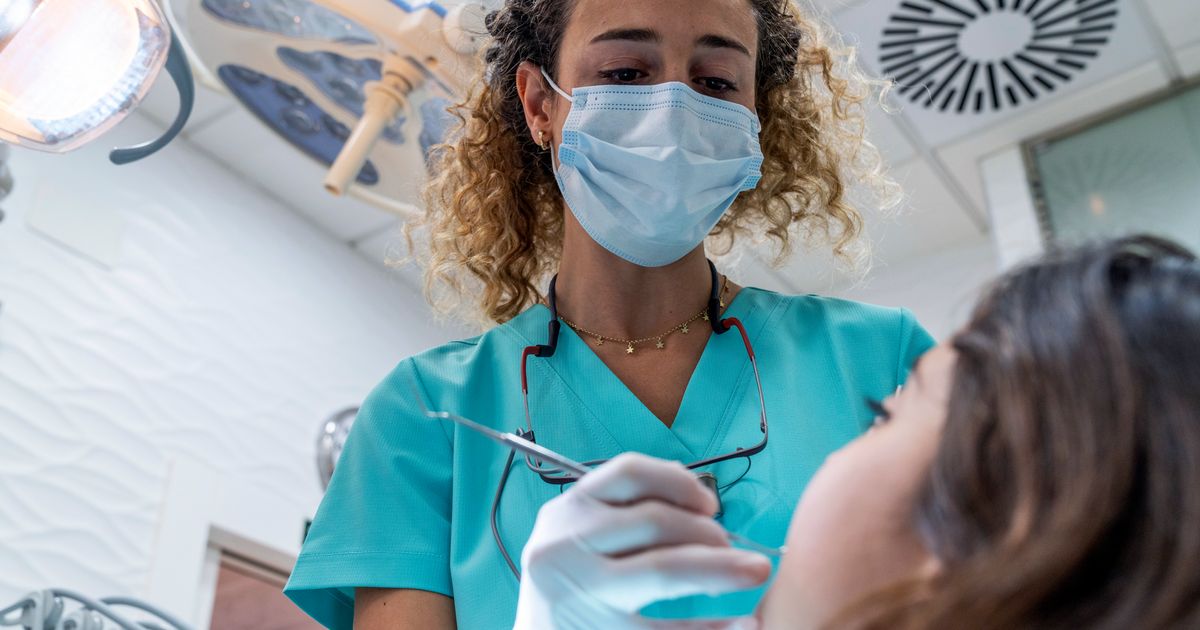At the height of the COVID-19 pandemic, many people avoided the dentist unless there was a real emergency (in fact, this is still the case for many). People have been afraid of the possibility of encountering COVID in public spaces — and, in the case of the dentist, afraid of having to take off their mask for their appointment.
However, now that we’re armed with booster shots and other treatments, many are starting to return to the dentist after some time away. But they’re showing up with problems that are often a result of missed dental exams and cleanings.
Tons of patients are playing catch-up after skipping the dentist for a long period of time, said Dr. Richard M. Lipari, a dentist at Lipari & Mangiameli Dentistry in New York. Others are dealing with routine dental issues that stem either from the pandemic or from problems they’ve been dealing with for years.
Here, dentists share the most common dental issues they’re seeing now:
Teeth grinding
Between the pandemic, a potential recession and political turmoil (among plenty of other things), we are living through stressful times. And one of the ways our bodies respond to stress is through bruxing, or teeth grinding, said Dr. Albert Coombs, owner of Smile Services DC and a member of the International Dental Implant Association. This is one of the biggest problems dentists have seen recently.
When you grind your teeth, you break down the enamel and create vertical or horizontal fractions in the tooth. “Depending on the type of fractures, we can do a large filling, a root canal or even have to remove the tooth because it was just that far damaged,” Coombs said.
It’s important to treat the grinding itself ― not just the problems, like tooth fractures, that result. “If we are not treating the bruxism, the tooth is just going to get re-damaged,” Coombs said. “If it broke a healthy tooth, it will break a tooth with a filling in it, it will break a root canal and it will even damage an implant.”
Treatments for grinding your teeth can include wearing a mouthguard at night, getting Botox and having a healthy plan for stress management.
More cavities
“We’re seeing a higher rate of cavities, and we think a lot of it has to do with the lifestyle change for people,” Lipari said. That pandemic-induced shift has to do with more hours at home, with full access to your fridge and pantry.
“I think we’re finding people are snacking a bit more, especially on foods that maybe they weren’t eating as routinely when they were going to and from their office,” Lipari said.
This lifestyle change, which for many people involves more frequent consumption of sugary foods and drinks, is leading to a higher rate of tooth decay, he noted.
Overall dental issues as a result of neglect
“Dental problems are kind of like roof leaks,” Coombs said. “If you have a small roof leak, it might go away for a little bit, but you know it’s going to come back far worse.” The same goes for dental problems.
“Over time, as the dental issues progress, the solutions are more evasive and often more expensive,” Coombs said. What starts as a small cavity may turn into a larger cavity that has to be treated with a more intense procedure if it’s been neglected.
After missed appointments, a fear of taking off your mask in public (a necessary part of visiting the dentist) and a period of time when dental exams and cleanings were not considered an essential pandemic service in many places, it’s only to be expected that dental neglect is fairly common throughout the country.
But this issue existed before the pandemic, too, Coombs noted ― it’s just that there’s been an increase lately.
Pollyana Ventura via Getty Images
Missing teeth
According to Coombs, one of the biggest issues he sees in his older patients is missing teeth, which can be the result of a number of untreated issues.
Missing teeth is a bigger problem nationwide than you might expect. According to the International Dental Implant Association, nearly 40 million Americans are missing either all of their top teeth or all of their bottom teeth. About 23 million are missing all of their teeth full stop, according to Coombs, and about 178 million people are missing at least one tooth.
Even a single missing tooth can compound into bigger problems, like wear and tear on the teeth surrounding it. Eventually, it can lead to even more missing teeth.
“If you are missing two teeth on the right side, you end up favoring the left side,” Coombs said. “So you have more breakdown on the left side of the mouth, because that’s where you’re doing the chewing.”
This is an issue that predates the pandemic, but it’s been made worse for some people because of long breaks between dentist visits. Inflation is also a factor: Dentistry is expensive, as Coombs noted, and getting a tooth pulled is often cheaper than other treatments.
To keep your teeth healthy, you should go to the dentist every six months.
It is recommended that you go to the dentist for a checkup and cleaning every six months, according to both Coombs and Lipari.
But Lipari noted that one schedule doesn’t necessarily fit all. “It really depends patient to patient. [For] some people who may have gum and bone issues, it may be advisable for them to go see their dentist three to four times a year,” he said.
The right cadence for you will be decided during those biannual visits. And keep in mind that if you experience tooth sensitivity or pain, it’s likely a good idea to schedule an appointment.
But if you haven’t been to the dentist recently, that’s OK.
You aren’t alone if you haven’t been to the dentist since the onset of the pandemic, but you should prioritize getting back on your six-month schedule, Lipari said. You don’t want a small problem to turn into a large one.
“It’s really to get ahead of these things,” he said, “because you don’t want it to become more problematic than it is.”


